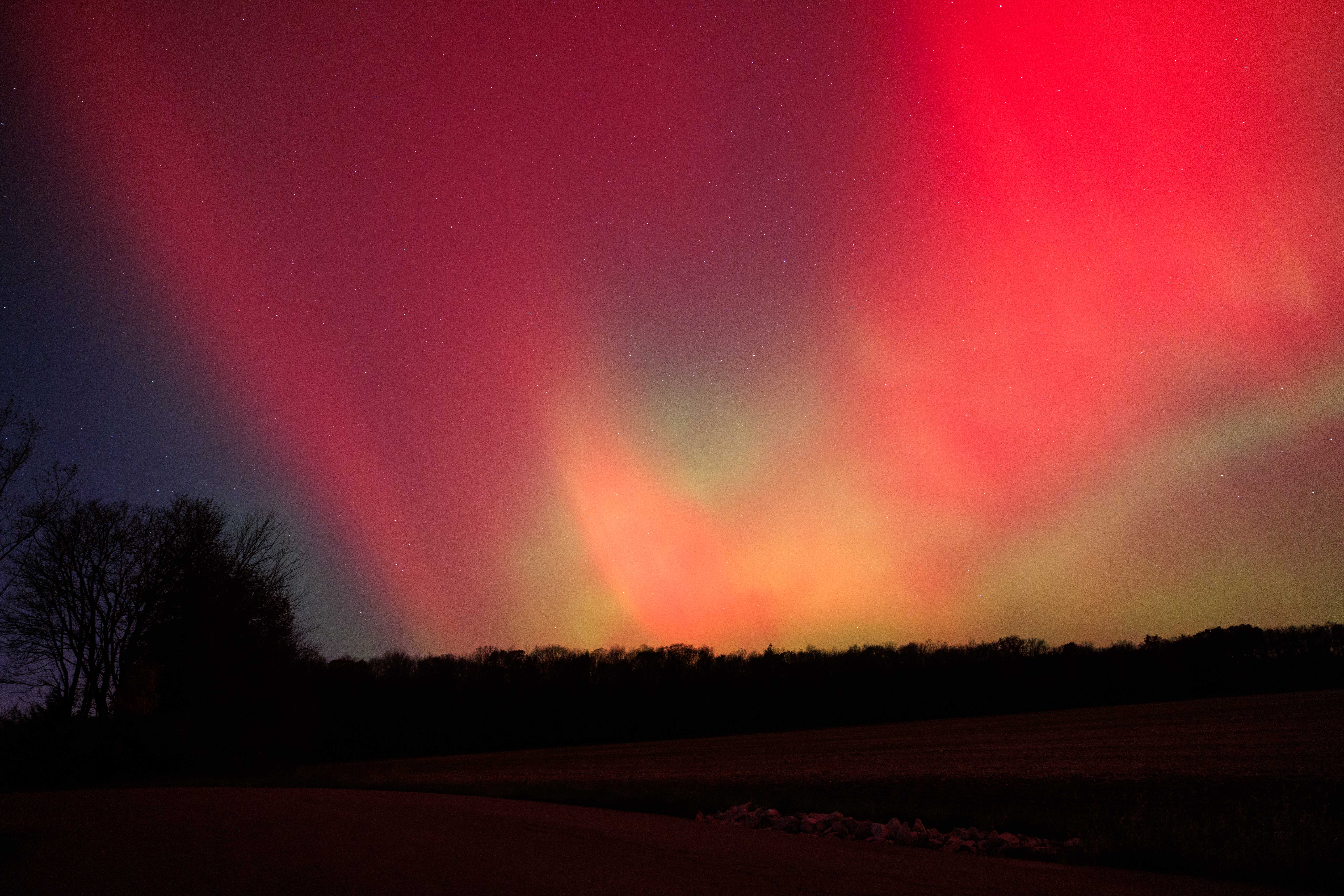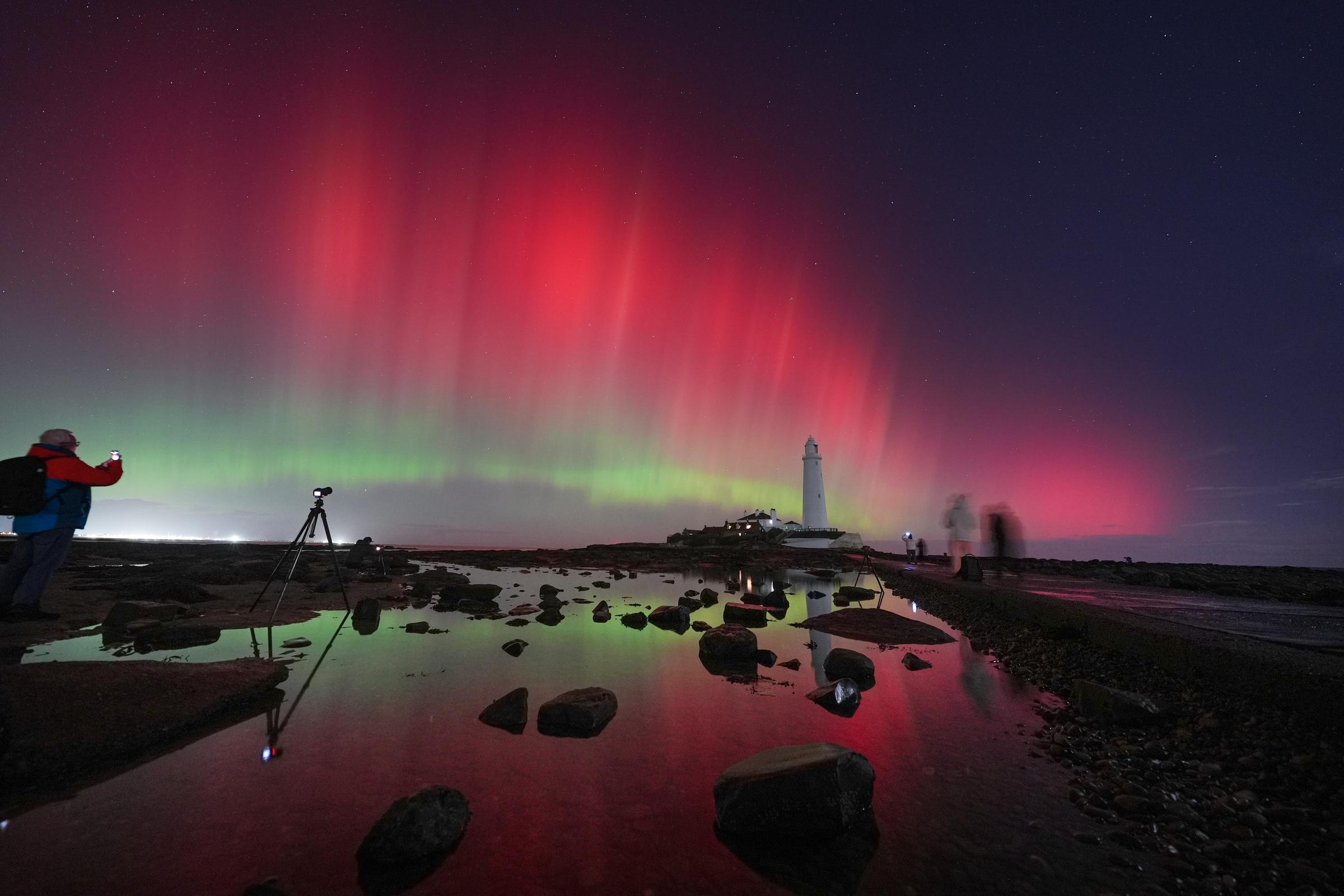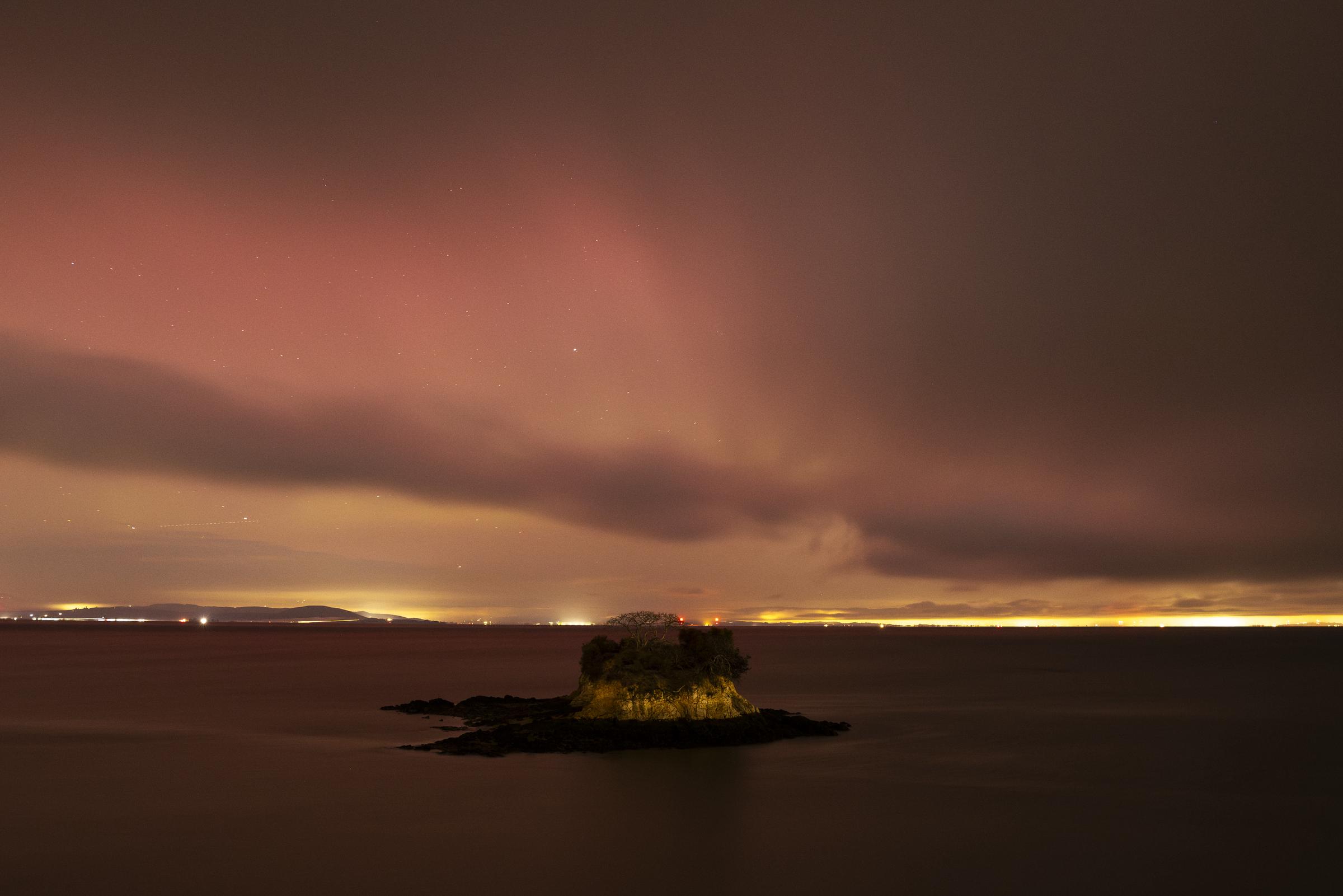
How to Watch the Northern Lights on Thanksgiving 2025: Timing & States List Inside
As families gear up for long drives, heavy meals, and the annual holiday shuffle, the cosmos seems ready to throw in its own seasonal surprise.
A fresh burst of solar activity is stirring up Earth's magnetic field, setting the stage for a Thanksgiving sky that might outshine the festivities below. If you're hoping to catch the show, here's when to look up for the northern lights, and which states could get front-row seats.

The aurora borealis lights up the night sky over Monroe, Wisconsin, on November 11, 2025, during one of the strongest solar storms in decades | Source: Getty Images
When the Sky Is Most Likely to Light Up
The aurora borealis (northern lights) are back on the guest list, just in time for Thanksgiving. They glow to life during geomagnetic storms, when energized particles streaming from the sun interact with gases high in Earth's atmosphere. This results in those sweeping, colorful displays.
According to National Oceanic and Atmospheric Administration (NOAA ) experts, activity is on the rise again, raising the chances of those soft greens and rosy pinks dancing over sections of the US on Thursday night, November 27.

The aurora borealis glows above rural Monroe County as a strong geomagnetic storm from recent solar activity pushes the Northern Lights unusually far south on November 11, 2025, in Bloomington, Indiana | Source: Getty Images
With the Kp index expected to reach a four — on a scale that tops out at nine — NOAA notes that the aurora could appear livelier, brighter, and more dynamic than usual. The best window to catch the display falls between 10 p.m. and 2 a.m. local time, when auroras are usually at their peak.
As geomagnetic activity rises, the window widens, allowing displays to stretch earlier into the evening or later toward morning.
Forecasters also expect minor geomagnetic storm conditions (G1 level), which should improve visibility not only on Thanksgiving night but also in the days leading up to and following it.
It's worth remembering that darkness is key. Viewers should get far from city lights and avoid full-moon glare. They should also keep in mind that high-latitude regions don't get proper darkness in summer — meaning bright, warm-season trips to the far north won't deliver much aurora viewing.

The aurora borealis glows in shades of green, pink, and purple above farmland during a rare appearance in rural southern Wisconsin in Monroe, Wisconsin, on September 14, 2025 | Source: Getty Images
Where You're Most Likely to See It
Northern states stand the strongest chance of catching the aurora's glow. NOAA's visibility line currently stretches across Washington, Idaho, Montana, the Dakotas, Minnesota, Wisconsin, Michigan, Maine, and, of course, Alaska.
Additionally, the closer one is to the magnetic north pole, now situated roughly 250 miles from the geographic pole in northeastern Canada, the higher their chances of being affected by it. A clear northern horizon helps too.

Aurora tourists from the Road Scholar travel company enjoy the show of Northern Lights at the Churchill Northern Studies centre in Manitoba, March 1, 2025 | Source: Getty Images
From a good vantage point, like a hilltop with an unobstructed view, people in the northern US can sometimes see auroras occurring as far as 600 miles farther north. And if one happens to be directly under the auroral oval, even relatively mild geomagnetic activity (Kp 3 or 4) can produce stunning displays.
If solar activity increases even more, the display could push farther south than expected. Clear skies will be essential, though — clouds can easily block the show.
Limited Show, Minimal Impact
NOAA meteorologist Mike Bettwy noted that this isn't shaping up to be a major display. He explained that the activity will likely be brief, subtle, and limited to select areas.
Bettwy also pointed out that this geomagnetic storm isn't expected to cause noticeable issues with communication systems, unless the solar activity becomes more intense than forecast. It will not be like the stronger geomagnetic storms that allowed many Americans to see the northern lights earlier this year.

The aurora borealis glows above rural Monroe County as a strong geomagnetic storm from recent solar activity pushes the Northern Lights unusually far south on November 12, 2025, in Bloomington, Indiana | Source: Getty Images
Capturing the Northern Lights: Tips for Stunning Photos
Earlier this year, social media was flooded with breathtaking photos of the northern lights, inspiring many to try snapping their own celestial shots. If you want your pictures to be clear, colorful, and vibrant this Thanksgiving, a few simple tips can make all the difference.
Even your smartphone can produce impressive results. Activate Night Mode on your iPhone or Pro Mode on Android, switch off the flash, keep your hands steady, and use a tripod if available.

The aurora borealis glow in the sky over St Mary's Lighthouse in Whitley Bay on the North East coast, on November 12, 2025 | Source: Getty Images
For DSLR photographers, a wide-angle lens is key. Pair it with longer exposures to capture the full sweep of colors and motion across the sky. With the right setup, you can turn a brief aurora into a photo worth sharing.

Rat Rock Island is seen at China Camp State Park as the Northern Lights glow above rolling fog in San Rafael, California, on November 11, 2025 | Source: Getty Images
A Cosmic Perspective from Space
Zena Cardman launched from Earth on August 1 and is currently serving as commander for NASA's SpaceX Crew-11 mission. She has added a unique perspective to her observations of the Northern lights.
The astronaut recently captured the spectacular view from the International Space Station, where she works as a NASA flight engineer.
"I've still never seen the aurora from below, but up here, it's a frequent show," Cardman shared. She offered a rare glimpse of the aurora from hundreds of kilometers above Earth — a perspective few on the ground ever get to witness.
